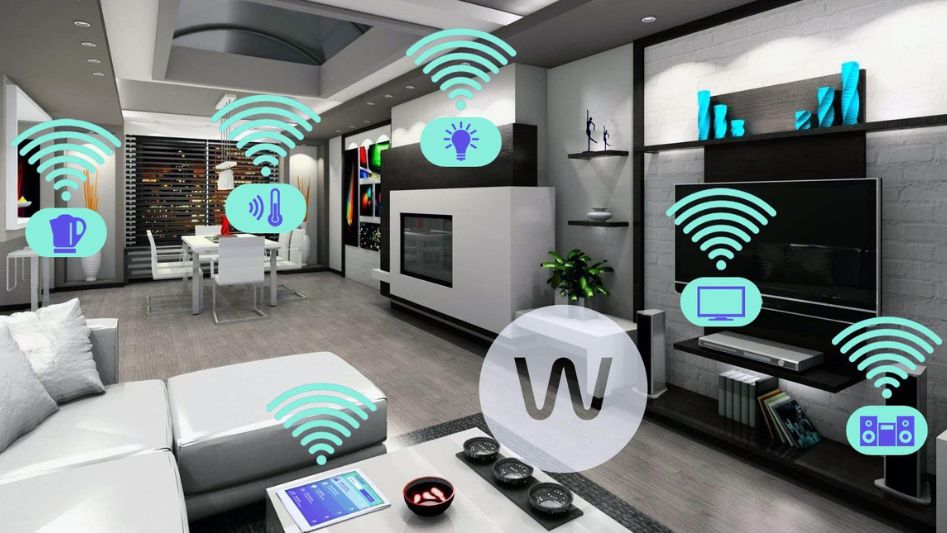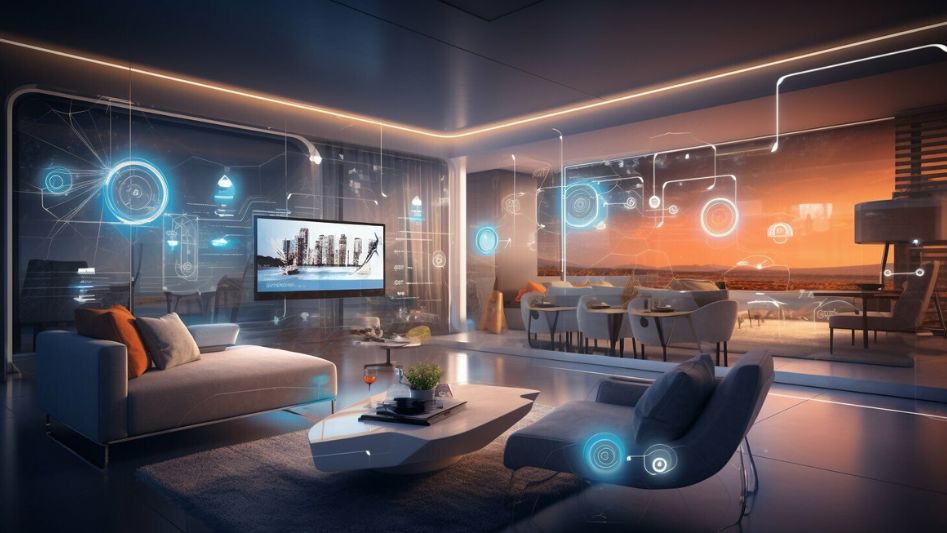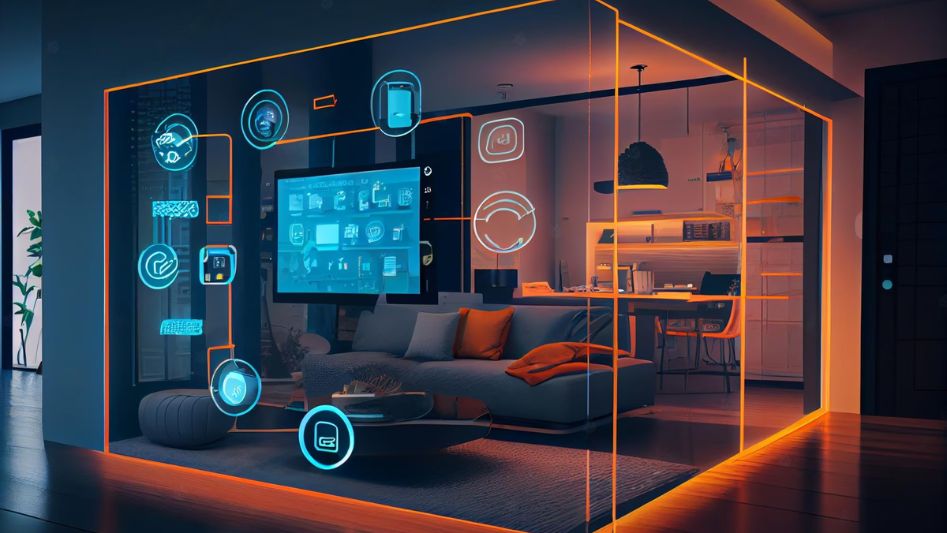In the era of rapid technological advancement, the Internet of Things (IoT) has emerged as a revolutionary force, significantly impacting various aspects of our lives. One of the most notable transformations it has brought about is in the realm of home automation, giving rise to the concept of “Smart Homes.” These intelligent living spaces are changing the way we interact with our homes and offering a new level of convenience, comfort, and security. This article explores the evolution of smart homes and their potential to reshape the future of modern living.
Table of Contents:
We invite you to read: “IOT AND SUSTAINABILITY: HOW SMART DEVICES ARE SAVING THE PLANET”

The Evolution of Smart Homes
The concept of smart homes has been around for decades, but it’s in recent years that it has gained significant momentum. The evolution of smart homes can be divided into several key phases:
1. The Birth of Home Automation
The concept of automating household tasks can be traced back to the early 20th century with the invention of the first washing machines and vacuum cleaners. These innovations laid the groundwork for the idea of a more convenient and automated home.
2. Rise of Remote Control
In the 1980s and 1990s, remote control technology made its way into our homes, allowing us to control various devices and systems with a single remote. This was a significant step towards the modern smart home.
3. Emergence of IoT
The real breakthrough came with the proliferation of the Internet and the birth of the IoT. Now, devices and appliances could communicate with each other and be controlled remotely through a central hub or smartphone. This marked the beginning of the smart home era we know today.
4. Integration and Interoperability
Today, smart homes are characterized by the seamless integration of various devices, platforms, and ecosystems. Compatibility and interoperability have become key factors in creating a truly intelligent living space.
Key Components of a Smart Home
A smart home comprises a wide range of interconnected devices and systems designed to enhance the overall living experience. Some of the essential components include:
1. Smart Lighting
Smart lighting systems allow homeowners to control the brightness, color, and scheduling of lights using smartphone apps or voice commands. This not only improves energy efficiency but also sets the mood and ambiance of the home.
2. Thermostats and HVAC Control
Smart thermostats enable precise temperature control and energy management. They learn user preferences over time and optimize heating and cooling systems for maximum comfort and efficiency.
3. Security and Surveillance
Smart home security systems include cameras, doorbell cameras, motion sensors, and smart locks. They offer real-time monitoring, alerts, and remote access, enhancing home security.
4. Voice Assistants
Voice-activated devices like Amazon’s Alexa and Google Assistant serve as central hubs for controlling various smart home devices. They can answer questions, play music, and execute commands for connected appliances.
5. Smart Appliances
From refrigerators that track food inventory to washing machines that can be controlled remotely, smart appliances simplify daily chores and save time.
6. Entertainment Systems
Smart TVs, audio systems, and streaming devices integrate seamlessly with online content, allowing users to enjoy a personalized and immersive entertainment experience.
Benefits of Smart Homes
The adoption of IoT technology in homes offers numerous advantages:
1. Convenience and Automation
Smart homes automate routine tasks, such as adjusting the thermostat, turning off lights, or locking doors, making daily life more convenient and efficient.
2. Energy Efficiency
By optimizing energy consumption and reducing wastage, smart homes contribute to a more sustainable future and lower utility bills.
We invite you to read: “THE SILENT REVOLUTION: HOW IOT DEVICES ARE QUIETLY CHANGING OUR DAILY LIVES”

3. Enhanced Security
Real-time monitoring and alerts ensure homeowners have better control over their home security, providing peace of mind, especially when away from home.
4. Improved Comfort
Customizable settings for lighting, temperature, and entertainment systems allow residents to create a comfortable and personalized living environment.
5. Remote Access
The ability to control and monitor home systems remotely via smartphone apps offers convenience and flexibility, even when traveling.
Challenges and Considerations
While smart homes offer numerous benefits, there are some challenges and considerations to keep in mind:
1. Privacy and Security
The interconnected nature of smart homes raises concerns about data privacy and security. Protecting personal information and securing devices from cyber threats is paramount.
2. Cost
Investing in smart home technology can be expensive upfront, although potential energy savings and increased home value may offset the initial costs over time.
3. Compatibility
Ensuring that all smart devices work seamlessly together can be challenging, as different manufacturers may use different protocols and standards.
4. Learning Curve
Some users may find it overwhelming to set up and manage a smart home, especially if they are not tech-savvy. Proper education and user-friendly interfaces are crucial to address this issue.
The Future of Smart Homes
As technology continues to advance, the possibilities for smart homes are endless. The future holds the promise of even greater automation, energy efficiency, and integration of emerging technologies such as artificial intelligence, augmented reality, and blockchain.
We invite you to read: “THE FUTURE OF TECHNOLOGY: PREDICTIONS ON AI AND IOT’S IMPACT IN THE NEXT 10 YEARS”

Conclusion
Smart homes powered by IoT technology are transforming the way we live, offering convenience, security, and energy efficiency like never before. While there are challenges to overcome, the potential benefits are substantial. As smart home technology continues to evolve, it is poised to become an integral part of modern living, shaping the way we interact with our homes and enhancing our overall quality of life.
FAQs
How does IoT technology work in Smart Homes?
IoT technology in Smart Homes relies on sensors, internet connectivity, and central control hubs. Devices communicate through the internet, enabling homeowners to remotely manage and automate various aspects of their home, from lighting and heating to security and entertainment.
What are the key components of a Smart Home?
The main components of a Smart Home include smart lighting, thermostats and HVAC control, security and surveillance systems, voice assistants, smart appliances, and entertainment systems. These devices work together to create a seamless and intelligent living space.
Are Smart Homes secure?
Smart Homes can be secure when proper cybersecurity measures are in place. However, they can also be vulnerable to hacking if not adequately protected. It’s essential to use strong passwords, keep firmware up to date, and regularly monitor and secure your smart devices.
Are Smart Homes energy-efficient?
Yes, Smart Homes are designed to be energy-efficient. Smart thermostats, lighting systems, and appliances optimize energy consumption, leading to potential cost savings and a reduced environmental footprint.
You May Also Like
- IOT SECURITY CONCERNS: SAFEGUARDING DEVICES IN A CONNECTED WORLD
- HOW IOT IS REVOLUTIONIZING HOME AUTOMATION AND SECURITY
- IOT AND EDUCATION: TRANSFORMING LEARNING WITH INNOVATIVE PROJECTS
- THE IOT IN TRANSPORTATION: A JOURNEY INTO THE FUTURE
- 10 MIND-BLOWING WAYS IOT IS TRANSFORMING INDUSTRIES
HELPFUL LINKS
- The Future of Smart Homes and IoT in Architecture: Transforming Living Spaces
- IoT home automation: 7 use cases, technologies & examples
- How Does a IoT based Home Automation System Work?
- How the Internet of Things Enables Smart Homes: Embracing the Future of Connected Living
- Smart Homes – IoT in Real Estate Leading the Future


Recent Comments